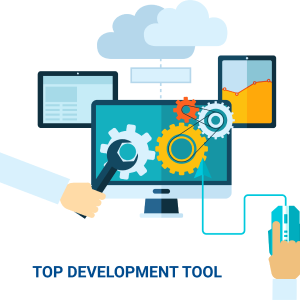
How Data Analytics is Revolutionizing Customer Experience
Hitting customer demand is an integral part of a sustainable business strategy. Meanwhile, experts are yet to discover an active approach that could rightly identify and quantify consumers’ market in the near future. However, it would not be wrong to say that data analytics is coming closer day by day and adding a magnificent value to predict consumers’ demand in the future. Having data analytics in line offers you a detailed insight into your marketing strategies to improve user experience and generate more leads.
With data analytics, you have a chance to learn whether what you have implemented is appropriate and what needs more attention. And without data analytics, it is merely a perception to track whether you are in the right direction or taking a wrong turn. So, you cannot afford unnecessary risks, integrate your platforms with data analytics, and improve your customer experience.
Considering this need, here we are with some points that will make you understand the power and benefits of data analytics if integrated into your business. First of all, let’s have a look at its scope.
Scope of Data Analytics
At the end of the year 2020, Forrester made a report in which predictions regarding marketing got put together. According to this report, only those organizations will be in the competition who will learn to leverage customer expectations and quantify Customer Experience’s (CX) business impact. Additionally, most of the forecasters also view that CX might get improved to have a competitive advantage.
Similarly, other studies relate that 90% of business managers believe that data analytics integration can considerably improve your sales, and 62% of the business manager are sure that data analytics can explicitly increase sales by 20%.
Meanwhile, if we look at the global market size of data analytics, it was $23 billion by the end of the year 2019, and it is expected to grow to $132 billion by the end of 2026 with the compound annual growth rate (CAGR) of 28.9%.
Considering that, it becomes clear the global market of data analytics is persistently expanding and that it would come with many benefits for businesses by improving the customer experience.
Now we come to the part where we talk about improving customer experience using data analytics.
How Data Analytics Improves Customer Experience
It is always easy to understand how new technologies can benefit you before deciding your target business approach. If you question why you use data analytics and data-driven tools to make CX better, the answer is simple; to make the customer experience better.
Let us see that how does it happen:
- Connection with Customers’ Touchpoints
Connection with your potential customers is a crucial takeaway to better your business. The journey of buyers with your product or services comprises multiple touchpoints, and each customer’s interaction is necessary to the perception of your brand.
How customers think of and take your services or products is a clear indication of how you treat them. If the buyers are not satisfied with the quality, it will become a subpar brand that could potentially damage your brand’s perception.
Therefore, set up a mechanism or strategy by analyzing your customers’ touchpoints, which should be built by analyzing the previous interactions. The fundamental goal is to reinforce the brand’s position and deliver a pleasant service or memorable product to improve user experience.
Here the data analytics helps you configure your business strategy that will meet customers’ touchpoints. You can use this data to create a personalized experience for them and generate digital fingerprints that can get put in line to analyze an abundance of information like what your customers think about your services and what they expect from your brand.
In short, customers have high hope for your brand. The goal is to convert your customers or visitors into permanent clients by analyzing their hopes using previous interactions with your brand.
- Identify Customers’ Experience Obstacles and Offer Frictionless Experience
When we talk about providing customers with a frictionless experience, we must have data sheets reflecting the previous data of customer interaction with your platform. Here, again data analytics comes to change the game.
Online customers run away from poor shopping experiences since they do not have enough time to waste to stay at your poorly-designed website. In contrast, frictionless customer experience is an ongoing effort to analyze their natural needs from your brand and lead them to their desired service or product.
Let’s say a customer has problems navigating your website on a search engine. Would the customer wait unless your site is navigated? Of course not, and they will move to some other suitable option. This way, you might lose a potential customer.
Accordingly, heat-maps, usually used in various forms of data analytics, offer the ability to make your website user-friendly according to the issues noted by data analytics when a user engages with your website. The information provided by the data analytics will help you detect usability issues or decide how you can fix those problems.
That is why you should upgrade your website to bring your customers back to you by analyzing your strengths and weaknesses with data offered by Google Analytics.
- Know About Recent Trends and Predict Outcomes
Spot of trends and predicting the outcome might be a glaring opportunity for your business, and data analytics can help you spot emerging trends and identify customers’ new behavioral patterns regarding that specific trend.
For example, many organizations are experiencing a sound increase in online sales for a specific product that falls in their domain. Knowing about this fact, an organization can reallocate its resources to bring that product into stock and provide revenue and sales team with a target out of that specific product.
The more detailed the data will be, the better the opportunities for businesses to capture emerging trends and predict potentially beneficial outcomes. For that reason, marketing, sales, and service teams should develop a unified mechanism to help organizations know their customers’ expectations; the customer services team remains in touch with customers and can better understand their needs.
Simultaneously, data analytics helps the sales and marketing teams have a real insight into customer’s user experience. The collective efforts of these teams can bring a magnificent chance to improve the experience.
- Strengthen Relation with Customer
Customers always hold high respect for brands that are involved in providing a personalized experience. Data analytics does not only let you know about their interest, activities, and expectations. Instead, it also parses consumers’ data like critical events.
With a holistic customer journey map and persistent tracking, capabilities allow the sales and services team to ensure that customers are always guided to have superior interactions with personalized user experience.
This information facilitates teams to provide their customers with a personalized experience and engage them individually. This one-on-one interaction plays a huge role in keeping your customers contending for the future.
A recent survey conducted by the Harris Poll on Personalization and Customer Experience (CX) shows that 76% of American people are more likely to purchase from a brand if asked to have a personalized experience. Over half of the people also revealed that they would be willing to pay if offered a customized experience.
It is a basic instinct that if your brand becomes successful in providing customers with a personalized user experience, sales are likely to grow at a much faster pace.
- Better and More Responsive Support
Data-driven systems can work with diversified existing channels, including email, SMS, messenger, voice, Twitter, WhatsApp, and WeChat, without manual assistance. On reaching out to your platform, customers get better, convincing, and responsive support without needing businesses to increase their staff.
Typically, technology accurately interprets what customers are asking for and the most suitable answer to their query. Meanwhile, with an updated customer engagement platform, the staff is empowered by a dashboard that displays all the data of a specific customer through various channels using which they remained engaged with your brand. That is how they need not explain their problem again, and a lot of time can get saved.
This level of personalized customer experience makes them feel that you know their problem and working on it.
Final Words
For sales objectives, meeting set goals for customer experience appears imperative, and it is possible by leveraging data analytics on the front lines to meet those objectives. Before you decide to launch a new product or want to know the real problem behind users’ declining engagement with your brand, use sessions offered by data analytics based on users’ activities and expectations.
Besides, you can better insight into your customer touchpoints’ behavioral patterns, run a marketing campaign to note your targeted audience’s reaction, and develop an environment of personalized Customer experience.
Be sure that data analytics is much more than it used to be in the past few years. The minor tracker of users on your website has now turned into a giant opportunity to help you achieve your targets.
Share this post:

Best WordPress Development Tools for 2021
In this article, we’re going to introduce you to the best WordPress development tools

Project Triangle
The project management triangle (called also the triple constraint, iron triangle and project triangle) is a model of the constraints of project management.

How a Custom Web App Can Improve User Experience (UX)
Custom web applications are complex algorithms used to capture, process, design, and store data…
Connect with us to find out what true value added services are.
contact@sourceone.io
Headquarters – Ho Chi Minh city, Vietnam
(+84) 353 197 427
Brand – Sydney, Australia
(+61) 401 713 724
About SourceOne
Privacy
Terms of Use
Mobile application
Website and API Services
UI/UX Design
Next – Gen Technology
NEWSLETTER
Join us for get latest updates




